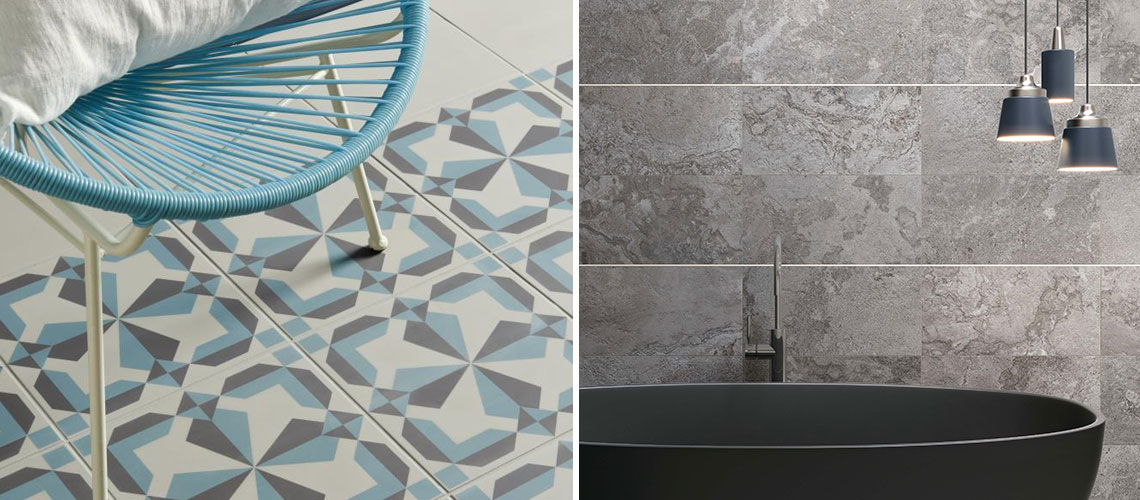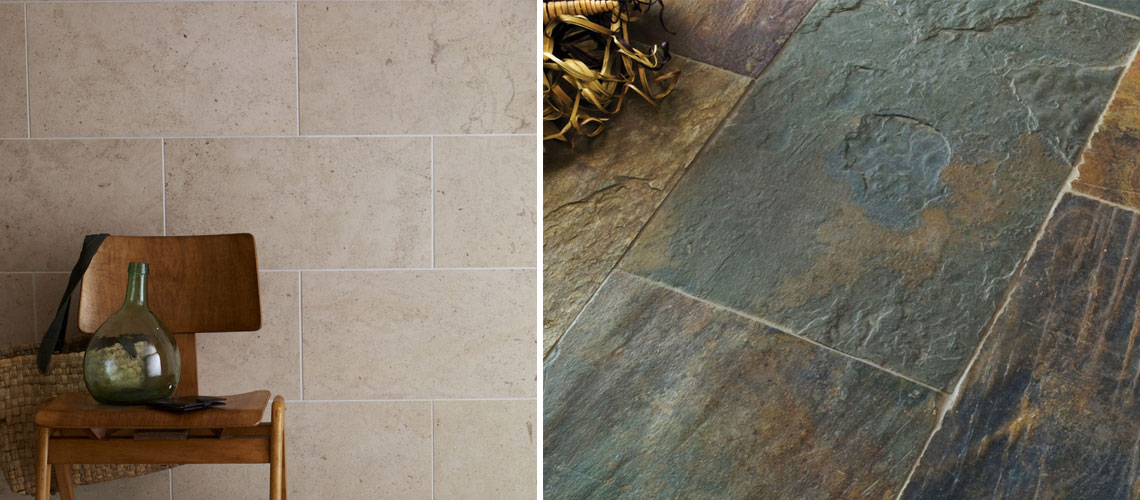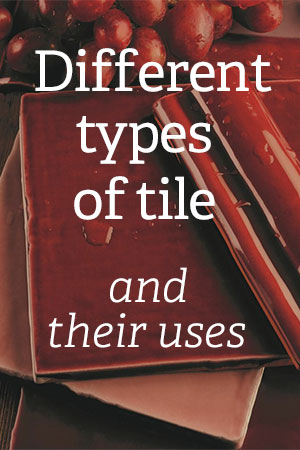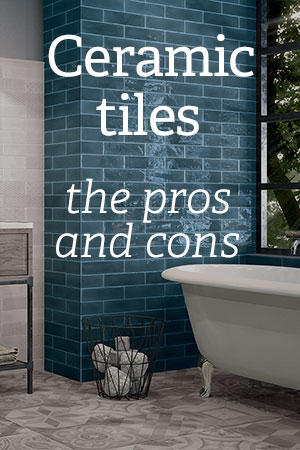We use cookies to make your experience better. To comply with the new e-Privacy directive, we need to ask for your consent to set the cookies. Our Privacy Policy
Different types of tile and their uses
The low-down on tiles
Are you enthusiastic to transform your living space into the home of your dreams, but don’t know where to start? Do you have your keen eye on the many beautiful tiles out there, but you don’t know your ceramics from your cobblestone? Fear not, let us help you choose the tile that’s right for you… and may it be a lasting relationship!
Ceramics
If someone asked you to name a tile, most likely the first thing you’d think of is a good old ceramic tile. They’ve been around for thousands of years (so have stood the test of time) and they’re very much on trend - you’ll see them everywhere, every day.
The ceramic tile started out as a red or white clay which is moulded into shape. A plain or decorative glaze is applied then permanently hardened after a good firing process in a kiln.

Ceramic Tiles: Residence Musk Field Tile 13 x 13cm by Winchester Tiles and Bumpy White Gloss Wall Tile 25 x 33cm
From the kiln to your home: the glaze on the tile protects and seals it, ensuring that it’s durable and easy to maintain. It will not absorb stains and splashes of shampoo in the bathroom or sauces from the cooker can simply be wiped away. Away with dirt and away with germs!
Ceramics make durable tiles; it’s a common misconception that they can only be used on the walls. In many cases the ceramic tile can be installed on the floor and even placed in high-traffic areas, such as commercial complexes.

Ceramic Tiles: Barcelona C 59.6 x 59.6cm and Barcelona B 59.6 x 59.6cm by Porcelanosa
Many people get confused when they’re talking about ceramic and porcelain tiles - it happens to the best of us. Ceramic tiles can actually be divided into two groups, non-porcelain and porcelain. We’ve just covered non-porcelain above, let’s go on to porcelain tiles next.
Porcelain
A porcelain tile is made from a finer clay, and is fired at a far higher temperature than ceramic tiles are. They are given the full treatment which gives us a fully vitrified tile.
Porcelain clays are denser and less porous that the ceramic equivalent so more durable and suited to heavy usage. Porcelain is more difficult to cut, but once installed it’s a dream – perfect for any area in the home or business.

Porcelain tiles: Odyssey Lewtrenchard 29.8 x 29.8cm by Original Style and Alpes Raw Lead Rett Tile 30 x 60cm by ABK
Porcelain tiles can be either glazed or un-glazed. The glazed variety is composed of a porcelain body with a glaze applied to the surface; this can be printed with any design, similar to a ceramic tile. The un-glazed porcelain is often called a ‘full-bodied tile’ as it’s entirely made up of natural clays so the characteristic colour can be seen throughout the tile. Un-glazed tiles have a slip-resistant surface, making them the preferred choice for bathroom floors and other wet areas.
Due to the increased strength, the porcelain tile can be manufactured in larger formats – a clever trick to making smaller rooms appear more spacious with an uninterrupted look.
Stone
You can achieve a stone effect on your walls and floors with both ceramic and glazed porcelain tiles. But perhaps you want the real deal in your home, to showcase all the beauty and charm of natural stone?
Natural stone tiles are cut from large slabs of stone which have been extracted from the ground. There is a wealth of different varieties when it comes to natural stone, such as marble, granite, travertine, slate, quartz, limestone and many more, where each has its own unique properties and character. Marble, for example, is a popular choice for kitchen countertops; where the large format takes advantage of the gorgeous natural veining. They usually have a polished finish which is undeniably beautiful whether you opt for a bright calacatta or dark negro marquina.

Stone Tiles: Honed Marble Bianco Carrara 30.5 x 61cm and Polished Marble Marron Emperador Dark 30 x 60cm tiles by Rockford
There are three main finishes for natural stone: polished, honed and tumbled. A polished finish has a high reflective surface as opposed to the matt honed finish. The tumbled tile has a worn and aged appearance; the edges are rounded off and achieve a rustic look.
There are so many different types of natural stone tiles available, all with natural textures and astonishing colours. They are typically used in kitchens, bathrooms, and conservatories, but also for exterior paved areas too. They have been around for many years and remained popular due to their robust and hardwearing nature.

Stone Tiles: Honed Limestone Moleanos Beige 60 x 40cm and Riven Slate Chinese Rust 30 x 60cm by Rockford
When it comes to choosing the right tile for you, it’s best to look at the pros and cons of each type. Keep your eyes peeled for our next handy guide where we will look at these in more detail.








